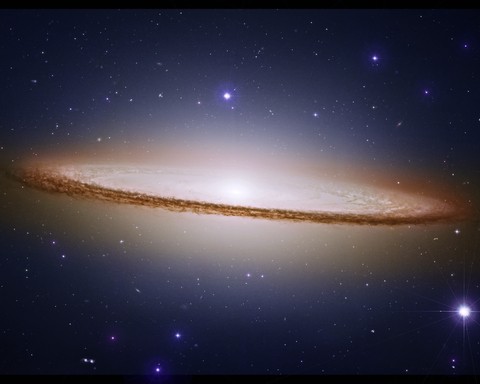This has been quite a decade for astronomical discoveries. The pictures from telescopes such as ESO and Hubble have been incredible, and here is yet another one:
Scientists say they have just found the furthest known galaxy, dubbed EDSY8p7. This galaxy is approximately 13.2 billion light years away which actually breaks the previous record.
Scientists also speculate that finding this new galaxy now—at the distance of 13 billion light years—means that it must have come into being at the infancy of the Universe (which was only about 13.8 billion years ago); just after the Big Bang.
(just a note from ShockingScience.com many astronomers and astrophysicists no longer believe the big bang theory)
No matter what theories you adhere to, this is really phenomenal.
Let’s find out a bit more and watch a video on the next page

How exactly do you determine a galaxy’s age?
this is from hubblesite.org:
Astronomers measure the distance to a galaxy in the same way we estimate the distance to an oncoming car by the brightness of its headlights. We know from experience how much light a car’s headlights emits, so we can determine how far away the car is.
To measure the distance to a galaxy, we try to find stars in that galaxy whose absolute light output we can measure. We can then determine how far away the galaxy is by observing the brightness of the stars. Such stars can help us measure the distance to galaxies 300 million light years away.
If a galaxy is too far away for us to distinguish individual stars, astronomers can use supernovae in the same manner, because the light output of supernovae at their peak brightness is a known fact. Supernovae can be used to measure the distance to galaxies as far as 10 billion light years away.
That is distance, same way lasers determine distance amount of time it takes to reflect back, but age, how do we determine an age of an object by its distance? How do astronomers determine its age? How could we sample a galaxie and determine its age? Is it something that would age? Does its characteristics change? Or energy levels?
If their model is right (and it might not be) it would mean that the galaxy would have had to been around 13.2 billion years ago for the light to make it that distance, hence it was sent that long ago. The galaxy might be toast by now and likely is. But was around back then to send the light. We’re suppisidely seeing it as it looked 13.2 billion years ago
Woah, incredible! Wish i would be alive to see man enter space like a daily drive!
Yep. Light travels at 186,000 miles/second. A light year is the distance light travels in one year at that speed, so a light year is a measurement of both distance and time.